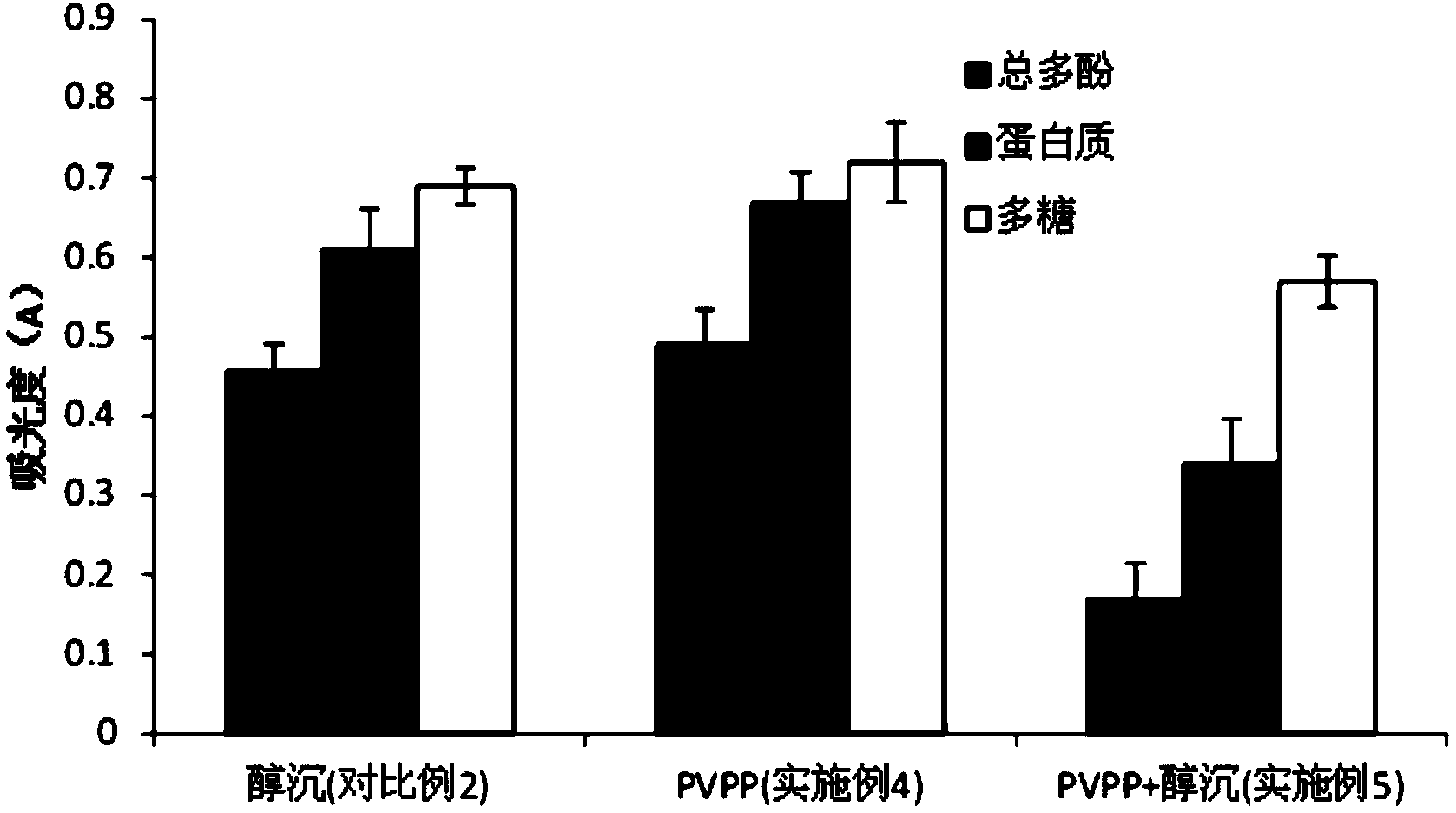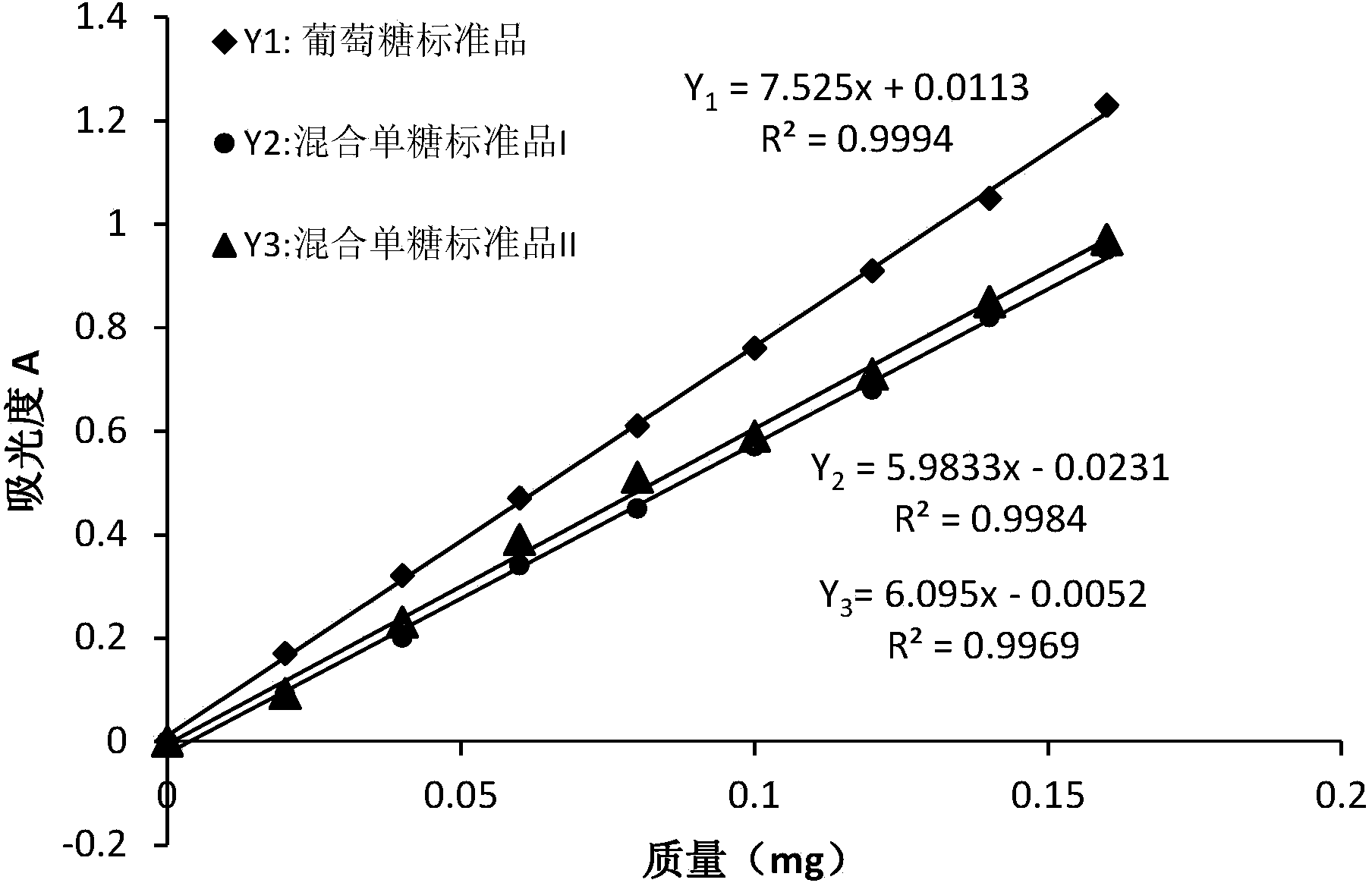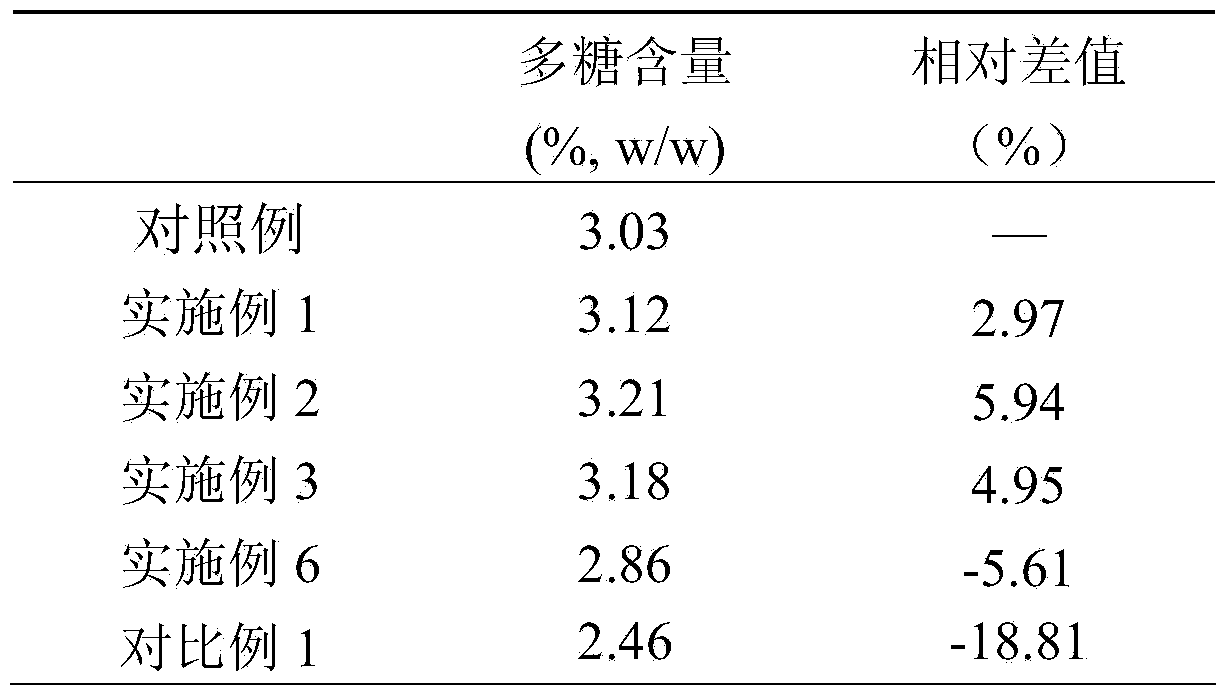Method for quantitatively detecting polysaccharide of semen cassiae
A quantitative detection method, cassia seed technology, applied in the field of quantitative detection of cassia seed polysaccharides, can solve problems such as large deviation of true value
- Summary
- Abstract
- Description
- Claims
- Application Information
AI Technical Summary
Problems solved by technology
Method used
Image
Examples
Embodiment 1
[0033] Get 5 grams of cassia seeds and pulverize through a 20-mesh sieve to obtain a sample cassia seed powder.
[0034] Soak the cassia seed powder with acetone according to the ratio of solid to liquid 1:15 (w / w), shake it for 30 minutes, and let it stand for 30 minutes; pour off the supernatant liquid, and then repeat the operation according to the same ratio of solid to liquid until the upper layer is colorless and the solid and liquid are separated Obtain cassia seed degreasing powder.
[0035] The cassia seed defatted powder treated with acetone was extracted with hot water at 80°C for 3 hours according to the solid-liquid ratio of 1:35 (g / mL), and the filtrates were combined to obtain the extract.
[0036] PVPP / alcohol precipitation treatment: Add PVPP to the extract at a concentration of 0.5g / 100ml, stir slowly for 1 hour, filter, and combine the filtrates. Add absolute ethanol equivalent to three times the volume of the filtrate to the filtrate, let it stand at room ...
Embodiment 2
[0039] Get 5 grams of cassia seeds and pulverize through a 40-mesh sieve to obtain a sample cassia seed powder.
[0040] Soak the cassia seed powder with acetone according to the ratio of solid to liquid 1:15 (w / w), shake it for 30 minutes, and let it stand for 30 minutes; pour off the supernatant liquid, and then repeat the operation according to the same ratio of solid to liquid until the upper layer is colorless and the solid and liquid are separated Obtain cassia seed degreasing powder.
[0041] The cassia seed defatted powder treated with acetone was extracted with hot water at 80°C for 3 hours according to the solid-liquid ratio of 1:35 (g / mL), and the filtrates were combined to obtain the extract.
[0042]PVPP / alcohol precipitation treatment: Add PVPP to the extract at a concentration of 2g / 100ml, stir slowly for 2 hours, filter, and combine the filtrates. Add anhydrous ethanol equivalent to three times the volume of the filtrate to the filtrate, let it stand at room t...
Embodiment 3
[0045] Get 5 grams of cassia seeds and pulverize through a 40-mesh sieve to obtain a sample cassia seed powder.
[0046] Soak the cassia seed powder with acetone according to the ratio of solid to liquid 1:15 (w / w), shake it for 30 minutes, and let it stand for 30 minutes. Pour off the supernatant liquid, and then repeat the operation according to the same ratio of material to liquid until the upper layer is colorless, and the solid and liquid are separated to obtain the degreased cassia seed powder.
[0047] The cassia seed defatted powder treated with acetone was extracted with hot water at 80°C for 3 hours according to the solid-liquid ratio of 1:35 (g / mL), and the filtrates were combined to obtain the extract.
[0048] PVPP / alcohol precipitation treatment: Add PVPP to the extract at a concentration of 2g / 100ml, stir slowly for 2 hours, filter, and combine the filtrates. Add anhydrous ethanol equivalent to three times the volume of the filtrate to the filtrate, let it stan...
PUM
 Login to View More
Login to View More Abstract
Description
Claims
Application Information
 Login to View More
Login to View More - R&D
- Intellectual Property
- Life Sciences
- Materials
- Tech Scout
- Unparalleled Data Quality
- Higher Quality Content
- 60% Fewer Hallucinations
Browse by: Latest US Patents, China's latest patents, Technical Efficacy Thesaurus, Application Domain, Technology Topic, Popular Technical Reports.
© 2025 PatSnap. All rights reserved.Legal|Privacy policy|Modern Slavery Act Transparency Statement|Sitemap|About US| Contact US: help@patsnap.com



